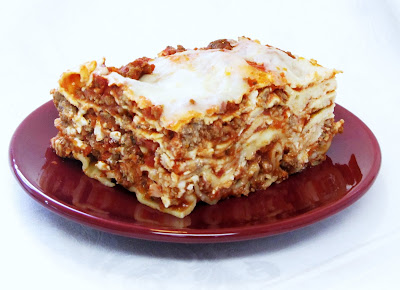Keen for Peaches and Nectarines
(Originally published in The News Review on Tuesday, August 5, 2014) Recipe link: Peach Cobbler with Lemon-Ginger Scone Topping
Everyone in my family loves peaches so most will be eaten fresh and unadorned. Some will be made into a perfect peach pie or a luscious peach cobbler. When they start to ripen faster than we can keep up, I'll begin freezing them for the winter.
Red Haven peaches from Norm Lehne Garden and Orchard
I have a peach-picking ritual. As midsummer approaches, I check the newspaper nightly, along with my email and Facebook feed, eagerly awaiting word that our local crops are ready. On opening day for my favorite varieties, I am often first in line. I drive into the orchard, park between the rows, and scout out the best trees. I want peaches that are mature with a lovely golden blush, but not too ripe or soft to travel home. I pick carefully, lifting and twisting each beautiful peach so I don't damage the trees that provide me with such delicious fruit. I gently place each sun-kissed peach into baskets and dishpans, stacking the fruit only two high to keep from bruising the delicate, juicy flesh.
Picking peaches is so easy that I often get carried away. When I run out of containers, I am forced to stop. With my precious cargo weighed and purchased (60, 70, 80 lbs!), I rush home to lay the peaches out in a single layer on newspapers that cover our dining room table. Each morning for the next few weeks I'll select two or three perfectly ripe peaches to peel and slice for my breakfast. To me it's sunshine in a bowl!
Breakfast in a bowl from Brosi's Sugartree Farms
Everyone in my family loves peaches so most will be eaten fresh and unadorned. Some will be made into a perfect peach pie or a luscious peach cobbler. When they start to ripen faster than we can keep up, I'll begin freezing them for the winter.
Nectarines are just as delicious as peaches and their seasons overlap. I pick and ripen nectarines just as I do peaches. Because they don't need to be peeled, nectarines are a snap to freeze or dehydrate.
Paris Orchards nectarines
The only drawback to having all of this fruit ripening indoors is the invasion of fruit flies. They can be such a nuisance! I don't remember where I first saw it, but I've been making a simple homemade trap for many years. It's not pretty, but it keeps the fruit fly population under control. Here's what you do: Put an inch of apple cider vinegar in the bottom of a large jar. (I use a one quart canning jar.) Add a few drops of dish soap and swish it around to mix. With a sheet of paper and some tape, make a cone with a small opening at one end and big enough at the other end to fit against the rim of the jar. The bottom of the cone should be an inch or two above the vinegar. Place the jar near the fruit or anywhere fruit flies are a problem. That's it! The vinegar attracts the flies. The soap coats their wings, making it difficult for them to fly out. Replace the vinegar and soap mixture every day. I keep one of these going, as needed, all the way through pumpkin season.
Preserving the Harvest
When the peaches and nectarines start ripening faster than we can eat them, it's time to preserve some of that summer sunshine for gray days to come. I'm not a big fan of canned fruit, so freezing and drying are my go-to methods for putting fruit by.
Freezing peaches and nectarines
Freezing is quick and easy. Slice peaches (peeled) and nectarines (unpeeled) onto cookie sheets in a single layer and freeze until firm. Once frozen, pack in plastic freezer bags. The frozen slices can be eaten like mini popsicles or added to smoothies.
Drying Nectarines
Nectarines don't need to be peeled before dehydrating. Slice them about 3/8-inch thick directly onto the drying trays. The color will darken as they dry, but I have never found pre-treating them necessary. Dry at 135 degrees until chewy with no moisture pockets left. Timing will depend on the type of dehydrator you have. It can also be affected by the weather. Start checking the nectarines after 10 to 12 hours. I condition all of my home-dried fruits by placing the whole batch in a large (2-gallon) zip top bag or container with a tight-fitting lid. It should only be two-thirds full. Seal well and allow the dried fruit to sit for several days at room temperature, shaking the bag or container once or twice a day to redistribute the fruit. This allows the drier pieces to absorb some of the moisture from the not-so-dry pieces so they all end up just right. After conditioning, I pack the fruit in smaller bags and store in the freezer, if I have room, though properly dried fruit keeps well at room temperature. Dried nectarines make great trail food for hiking and camping. They can also be snipped into pieces and added to baked goods like muffins.





